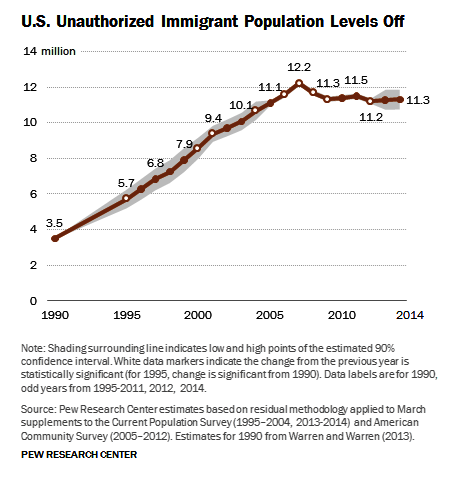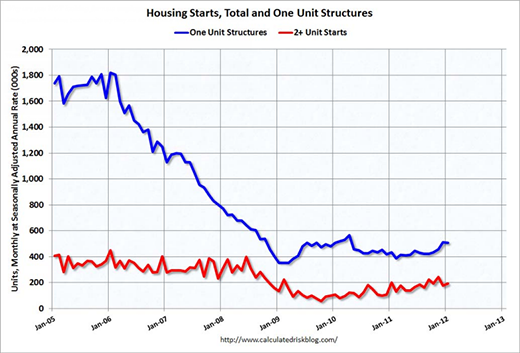Illegal alien labor in the Colorado housing industry
We don't have an illegal immigration problem - we have an illegal employment problem
On March 19, 2016, the Colorado Legislature once again failed to address the key issue that provides the impetus for illegal immigration in the United States. By a vote of 9 to 2, the members of the State, Veterans, and Military Affairs committee in the House killed HB 16-1202, a bill that would have required all businesses in Colorado with ten or more employers to participate in the Federal E-Verify program.
E-Verify is an easy to use program which verifies the work eligibility status of newly hired employees. E-Verify is fast and free, and it's the best way employers can ensure a legal workforce. E-Verify compares information from an employee's Form I-9, Employment Eligibility Verification, to data from U.S. Department of Homeland Security and Social Security Administration records to confirm employment eligibility.
U.S. immigration law requires companies to employ only individuals who may legally work in the United States - either U.S. citizens, or foreign citizens who have the necessary authorization.
But the Colorado Legislature doesn't think it's a good idea to verify the legal work status of Colorado workers, and in fact has refused to require mandatory use of E-Verify for over a decade of legislation introduced almost every year going back to the special session of 2006 called by Governor Owens to address immigration issues.
Even though polls have consistently shown a great majority of Coloradans oppose illegal employment and it's a violation of Federal law since the Immigration and Reform Control Act (IRCA) Amnesty was enacted in 1986, a coalition of special interests rule the day.
Simply put, many Democrats look the other way on illegal immigration (either beholden to business interests or looking for future votes), while Republicans representing businesses interests love the cheap, illegal labor that has contributed to the widening income inequality between those at the top, and those on the bottom of the economic ladder.
2006 was the height of the housing boom, and the boom was enabled by large numbers of illegal aliens in the production housing business who had flooded over the border because they could readily find jobs in housing construction.
In that special Legislative Session in 2006, HB 1018 was introduced that would have required Colorado employers to use E-verify. The bill had the support of the Republican caucus and Governor Bill Owens, until a couple of Sunday morning visitors met with Owens and reminded him who he really worked for.
From the Denver Post on July 11, 2006:
“I’ve (Owens) gone to the wall for it, and I think if you talk to any of the legislators, they’ll tell you that”, Owens said. “I’ve talked very specifically with every businessperson who has discussed it with me and told them I’m strongly in favor of it” (i.e. HB 1018).
But Republican Al White, the sponsor of House Bill 1018, told his Republican colleagues that Owens was supportive of the bill until business leaders told him the price of a house might go up by 5 percent because home builders could lose illegal-immigrant labor.
“That tells me that business in Colorado is really not serious about doing away with illegal immigration in this state,” White said. “And if that is the case, this whole special session is nothing but bull.”
Rep Lynn Hefley, R-Colorado Springs, said it bothered her “when business people come to talk to the Governor and tell him what needs to be done.”
She was referring to homebuilder Larry Mizel, who talked to Owens on Sunday.
“We know, and names were named here, who came and gives big bucks to the party. It’s my party too, and I came here for us to do a job, and I’m ashamed of us,” Hefley said.
So far in the 2006 election cycle, Mizel has donated $29,150 to Republican political action committees and candidates and another $25, 000 to the Republican National Committee.
Larry Mizel is the CEO of MDC Holdings, the parent company of Richmond Homes, one of the largest production home builders in Colorado with operations in other states as well. Accompanying Mr. Mizel at his Sunday morning meeting with the Governor was lawyer Norman Brownstein, chief lobbyist for the home building industry in Colorado, who Ted Kennedy once referred to as “the 101st Senator”.
Pay to play. Apparently $54,150 more than gets you a seat at the table - you get to pick the menu too. The rest of us are in the Burger King drive thru. But most significantly, that's how the ruling political class maintains the status quo.
Nationally from 2000 to 2007 when the housing boom occurred, the illegal immigration population increased from about 7.9 million to 12.2 million, according to the PEW Research Center. The housing market started to soften in 2007 and then collapsed in 2008 taking the entire economy with it. During the next 5 years until housing again picked up, the illegal immigration population actually dropped by a about a million, to about 11.2 million in 2011 which was the bottom of the housing market in the meltdown.

[CAIRCO note: recent immigration trends reported by the Census Bureau and PEW Research Center may be reasonably questioned. CAIRCO also contends that the actual numbers of illegal aliens in the United States are vastly underreported.]
While it can be said the collapse of the economy in 2008 eliminated jobs in all sectors of the economy and coincided with the decline of illegal immigration, no sector of the economy was hit harder than the housing business going from 1.8 million housing starts to under 400,000.
By 2015 with housing recovering to the point of another boom cycle, illegal Mexican immigration increased significantly by 740,000 nationally. After falling or growing little in recent years, the number of Mexican immigrants (and illegal aliens) again seems to be growing significantly.1
The National Association of Home Builders (NAHB) is projecting a housing start level in 2016 of 1.26 million units nationally. Colorado and the Front Range in particular is currently rated one of the hottest housing markets in the country, with year-over-year appreciation from January 2015 to January 2016 of 10.9 percent.2
In Colorado 22 percent of the illegal workforce (or about 26,000) is in construction, more than any other single sector of the economy, according to the Census Bureau. From the foregoing statistics, it's clear that there is a direct correlation between the illegal population increase (workforce) and the labor requirements of the production housing industry.3
It also tells you why the powerful and politically connected home building industry in Colorado has been able to thwart any attempts to put the brakes on illegal employment. The industry is simply addicted to using cheap, illegal labor and has no interest in changing that, because any change in the status quo is going to adversely affect its profits.
As Representative Al White said in 2006, “business in Colorado is really not serious about doing away with illegal immigration....”, and the business most interested in exploiting cheap, illegal labor in Colorado (and thus promoting illegal immigration) is the production housing industry.
By the numbers, its clear illegal immigration is a product of illegal employment, but nobody wants to talk about it. As the Great Recession demonstrated, if there are no jobs here for illegals, then there will be no illegal immigrants coming here (and in fact they will leave, as verified by the actual drop of one million during the Great Recession). But even though it's been illegal to hire illegal aliens in the United States since 1986, the law is rarely applied, and the illegal hiring goes on with impunity. Enforcement is weak if non-existent, and the fact is the financial rewards far outweigh the risk of being busted for employing illegal aliens.
The housing industry is perfectly set up for utilizing illegal alien labor. Few may realize it, but a home building business like Shea Homes or Richmond Homes (Mizel's company) have relatively few employees consisting of management and administrative/sales personnel – the homes themselves are built by subcontractors. Many times there are subcontractors working for subcontractors working for even more subcontractors. A typical “framing contractor” contracts with the builder to frame the house supplying the materials and labor on a “turnkey basis”, then contracts out the framing labor to yet another “contractor”, who then “contracts” with individual crews who are more often than not illegal alien workers.
There is very little accountability, and lots of plausible deniability. And the dirty little secret that nobody wants to acknowledge (particularly liberals who are supposed to be in support of the working class) is that many of these illegal aliens are exploited with very low pay and no workplace safeguards such as worker's compensation.
It's now conceded by virtually all concerned with this issue that the 1986 Amnesty has been a failure. Amnesty was granted, but now we have 12 million to 30 million illegal aliens here as opposed to 3 million in 1986. Weak enforcement of the laws prohibiting the employment of illegal alien workers, along with inadequate border enforcement allow companies to hire illegals instead of American workers. Trump wants to address that with his wall – but is that closing the barn door after the horse is out? Interior enforcement and E-Verify is a necessary component of comprehensive immigration control.
But the biggest failure, according to Doris Meissner of the Migration Policy Institute, was the bill simply misjudged the high demand for immigrant labor in the United States. “Congress didn't foresee at the time that employers would want more immigrants in the years ahead.” Meissner says.
The plain and simple fact is cheap labor will always be in higher demand than more expensive labor when producing the same product, and cheap labor is what the housing industry gets in utilizing illegal aliens. Most of our consumer goods today are made in China or other countries where labor costs are low (our manufacturing jobs have been outsourced). We can't import our houses, so instead the housing business imports cheap illegal labor where a significant portion of that labor money is not spent here in the US but sent back to Mexico and other countries in the form of remittances.
The Colorado Legislature is part of the problem, not part of the solution. Instead of addressing the problem at its source, i.e. illegal employment, and passing legislation like HB 16-1202 mandating E-Verify, the Legislature (and the Governor, regardless of party) enables and continues the problem by doing the bidding of the ruling political class and its parochial economic interests.
The 1986 Immigration Amnesty was an abysmal failure for many reasons, but indisputably the biggest reason was its failure to address the demand for low wage labor (and thus enabling illegal immigration) by mandating an effective mechanism to verify legal employment status.
Regrettably, the Legislature has not learned the lessons of history, and seems bent on pursuing a failed policy enabling and perpetuating our addiction to cheap illegal labor.
Lon Howell has 16 years experience working in the production housing business in the Denver area for a number of companies. No longer in the business, the last major project he worked on before the housing collapse as a Project Superintendent was the 140 unit Water Tower project in Arvada developed by the Arvada Urban Renewal Authority. By personal observation, his conservative estimate was that at least 50 percent of the construction labor force on the government sponsored project were illegal aliens.
References
1. Current Population Survey (CPS), US Census Bureau, Center for Immigration Studies.
2. Core Logic.
3. Migration Policy Institute (MPI) analysis of U.S. Census Bureau Data from the 2013 American Community Survey (ACS).
CAIRCO Research
Appallingly dishonest Pew study on immigration trend from Mexico - Massive spike in net migration from Mexico since 2014, Daniel Horowitz, Conservative Review / American Renaissance, November 23, 2015.
How many illegal aliens reside in the United States?
